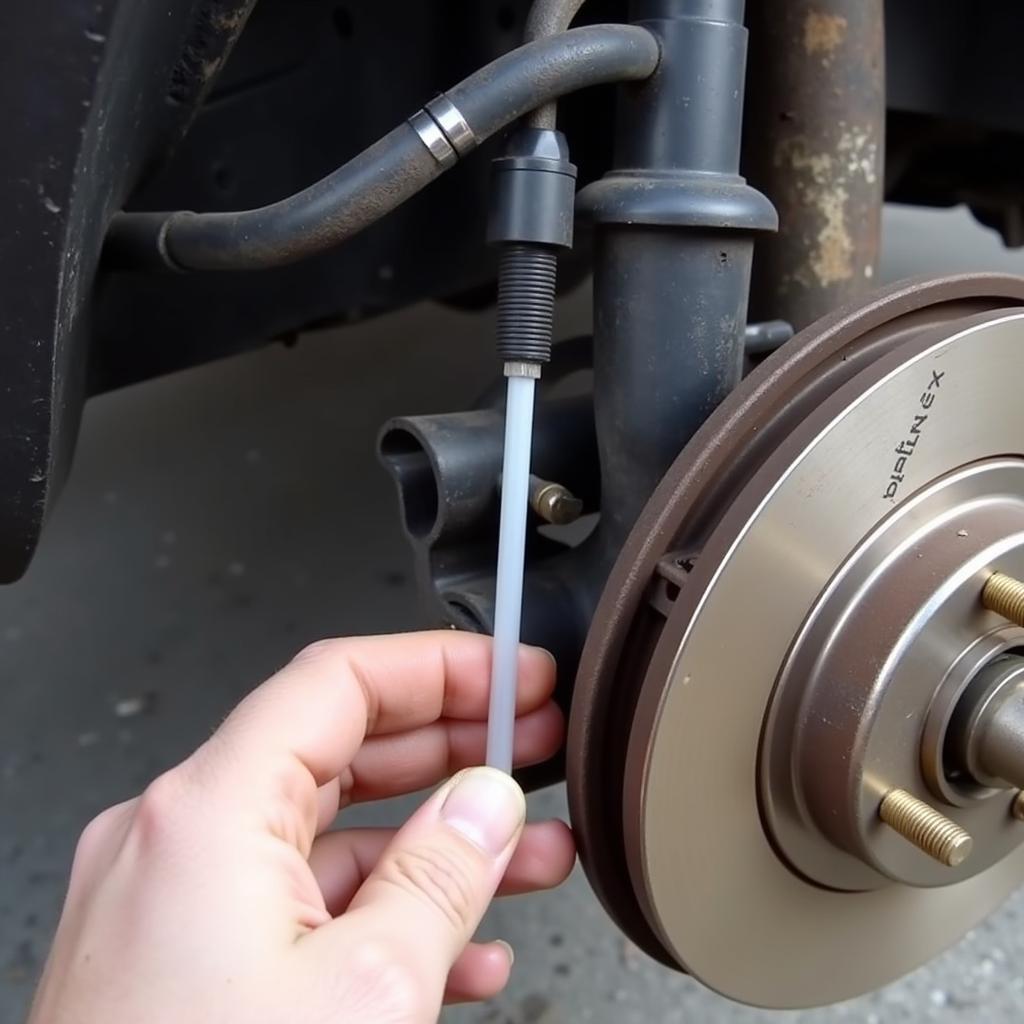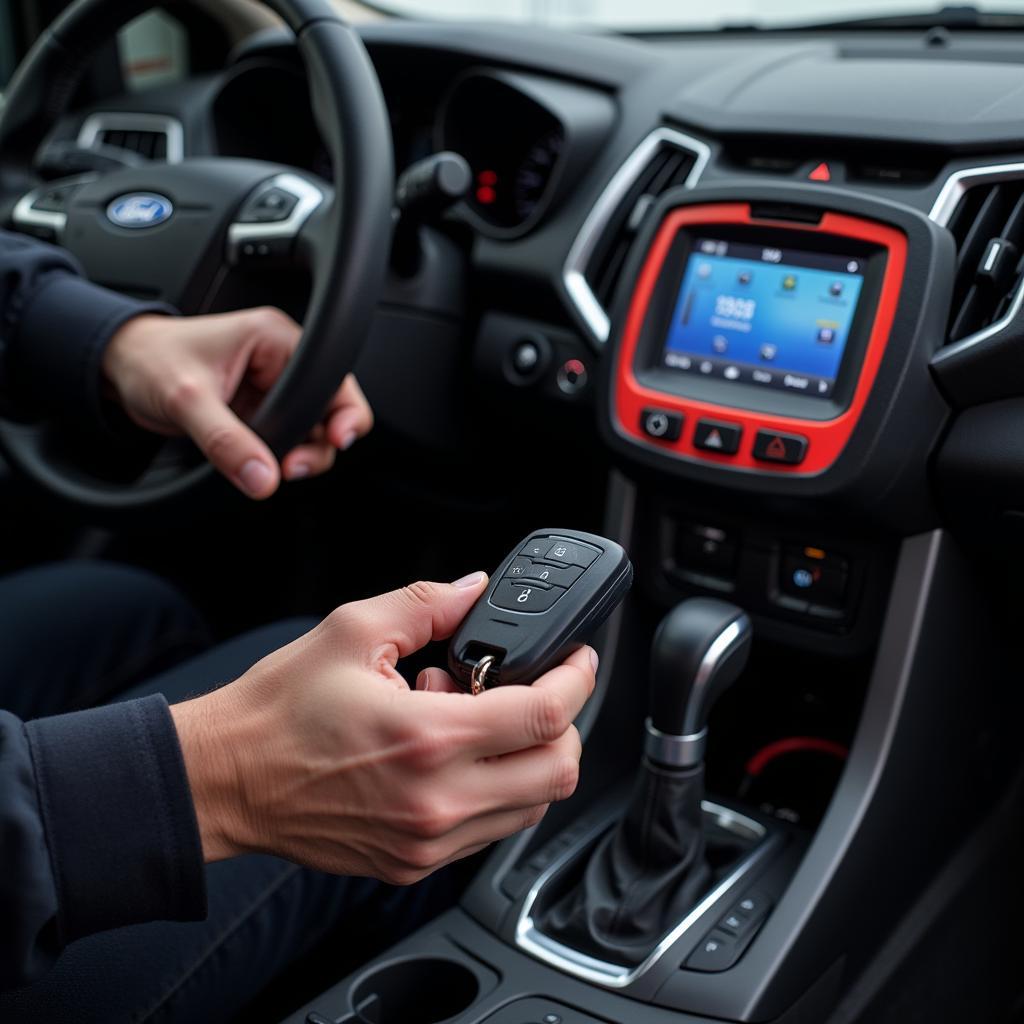A brake low warning sensor is a critical component of your vehicle’s braking system. It alerts you when your brake fluid level is low, potentially indicating a serious issue. This article guides you through understanding, diagnosing, and resolving problems related to your brake low warning sensor. brake low warning sensor tab on pad A malfunctioning sensor can lead to unsafe driving conditions, so addressing this warning promptly is essential.
Understanding the Brake Low Warning Sensor
The brake low warning sensor’s primary function is to detect and alert you to low brake fluid levels. Low brake fluid can indicate leaks in the brake lines, worn brake pads, or other problems within the hydraulic system. Ignoring this warning can lead to brake failure, a dangerous situation that compromises your safety and the safety of others. The sensor typically works by using a float that rests on the brake fluid’s surface. As the fluid level drops, the float descends, triggering the warning light on your dashboard.
Diagnosing a Brake Low Warning Sensor Issue
When your brake low warning light illuminates, the first step is to check your brake fluid level. If it’s low, top it off with the correct type of brake fluid specified in your owner’s manual. However, simply adding fluid is not a long-term solution. If the light persists, you’ll need to investigate further. Possible causes include a faulty sensor, worn brake pads, or leaks in the brake lines.
Checking for Leaks
Inspect your brake lines, calipers, and wheel cylinders for any signs of leaks. Look for wet spots or drips on the ground beneath your vehicle, particularly near the wheels. Brake fluid is typically clear or slightly amber.
 Brake Fluid Leak Detection
Brake Fluid Leak Detection
Testing the Sensor
You can test the brake low warning sensor using a multimeter. Disconnect the sensor’s electrical connector and check for continuity according to your vehicle’s specific wiring diagram. A lack of continuity usually indicates a faulty sensor that needs replacement.
Replacing a Brake Low Warning Sensor
Replacing the brake low warning sensor is usually a straightforward process. Locate the sensor on the brake fluid reservoir, disconnect the electrical connector, and carefully remove the sensor. Install the new sensor, ensuring a proper seal. gmc acadia brake warning light and system stabilitrak off service Remember to bleed the brake system after replacing the sensor to remove any air bubbles.
Bleeding the Brakes
Bleeding the brakes involves removing air from the brake lines. This process requires a helper and specific tools. Follow the procedure outlined in your owner’s manual. Improper bleeding can lead to a soft or spongy brake pedal. subaru 2009 impreza dash warning brake If you’re unsure, it’s best to consult a qualified mechanic.
“A common mistake DIYers make is not bleeding the brakes properly after replacing the sensor,” cautions automotive expert John Smith, ASE Certified Master Technician. “This can lead to a dangerous reduction in braking performance.”
Conclusion
Addressing a brake low warning sensor issue is crucial for your safety. Understanding the sensor’s function, diagnosing the problem, and taking appropriate action ensures your vehicle’s braking system functions optimally. Don’t ignore this critical warning – take action to protect yourself and others on the road. mazda brake system warning light check engine light Remember, your brake low warning sensor is a vital component of your vehicle’s safety system.
“Regular brake system checks are essential for preventing issues before they become serious,” advises automotive specialist Sarah Johnson, Certified Brake Specialist. “A simple inspection can save you from costly repairs and ensure your safety on the road.” service brake assist warning light Ignoring a brake low warning sensor can have serious consequences.

